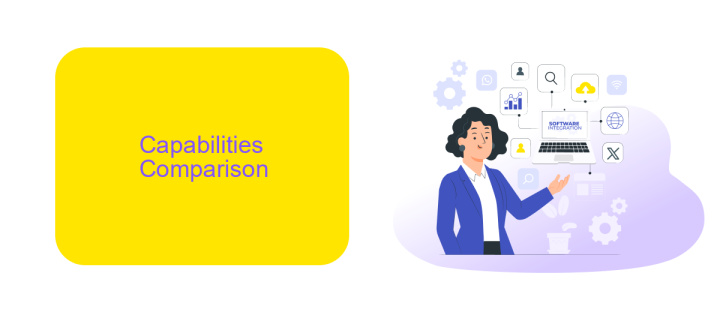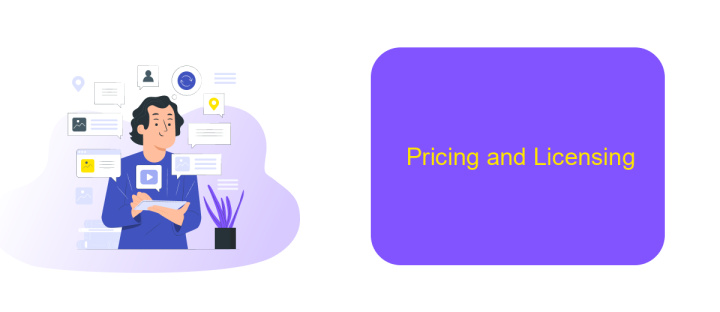Camunda Vs Appian
In the rapidly evolving landscape of business process management (BPM), choosing the right platform is crucial for organizational efficiency and growth. This article delves into a comparative analysis of two leading BPM tools: Camunda and Appian. By examining their features, capabilities, and unique strengths, we aim to provide insights that will help businesses make an informed decision tailored to their specific needs.
Introduction
In the ever-evolving landscape of business process management (BPM), choosing the right platform is crucial for efficiency and scalability. Camunda and Appian are two prominent contenders in this space, each offering unique features and capabilities that cater to different organizational needs. Understanding the strengths and limitations of these platforms can help businesses make informed decisions.
- Camunda: Known for its open-source nature, flexibility, and robust BPMN 2.0 support.
- Appian: Offers a low-code environment, rapid application development, and comprehensive integration options.
Both platforms aim to streamline business processes, but their approaches differ significantly. Camunda excels in scenarios requiring deep customization and complex workflows, while Appian shines in rapid development and ease of use. Additionally, integrating these platforms with other services, like ApiX-Drive, can further enhance their capabilities, providing seamless data synchronization and automation across various applications. By examining these aspects, businesses can better align their BPM strategy with their operational goals.
Capabilities Comparison

When comparing Camunda and Appian, one must first consider their core capabilities. Camunda excels in BPMN-based workflow automation and offers extensive support for DMN and CMMN standards. It provides developers with a flexible, open-source platform that can be customized to meet specific business needs. Camunda’s lightweight architecture ensures high performance and scalability, making it a preferred choice for enterprises looking to streamline their process automation.
Appian, on the other hand, offers a more comprehensive low-code automation platform that integrates seamlessly with various enterprise systems. It combines BPM, RPA, AI, and case management into a single cohesive solution. Appian’s drag-and-drop interface allows for rapid application development, reducing the time to market. Additionally, for those looking to enhance their integrations, services like ApiX-Drive can be utilized to effortlessly connect Appian with other applications, ensuring smooth data flow and operational efficiency. This makes Appian a robust choice for organizations looking to accelerate digital transformation.
Pros and Cons

When comparing Camunda and Appian, it's essential to weigh their strengths and weaknesses to determine which platform best fits your business needs.
- Camunda Pros: Open-source flexibility, robust BPMN 2.0 support, and strong developer community.
- Camunda Cons: Requires significant technical expertise, less user-friendly for non-technical users, and limited out-of-the-box integrations.
- Appian Pros: User-friendly interface, extensive out-of-the-box features, strong integration capabilities with services like ApiX-Drive.
- Appian Cons: Higher cost, less control over customization, and potential vendor lock-in.
Ultimately, the choice between Camunda and Appian hinges on your specific requirements. Camunda is ideal for those seeking flexibility and control, while Appian offers a more user-friendly, all-in-one solution with powerful integration options.
Pricing and Licensing

When comparing Camunda and Appian, pricing and licensing are crucial factors to consider. Both platforms offer different pricing models tailored to various business needs, but they have distinct approaches that can significantly impact your budget and overall cost of ownership.
Camunda typically provides a more flexible and transparent pricing structure. It offers an open-source version, which is free to use, and an enterprise edition with additional features and support. This allows businesses to start with the open-source version and scale up as needed, paying only for the features and support they require.
- Open-source version: Free
- Enterprise edition: Custom pricing based on features and support
- Subscription-based model: Annual or multi-year contracts
Appian, on the other hand, follows a subscription-based pricing model, which can be more predictable but potentially more expensive in the long run. It offers a comprehensive package that includes various features and integrations, but this all-in-one approach may not be suitable for all businesses. Additionally, for those looking to streamline integrations, services like ApiX-Drive can be utilized to enhance connectivity between different platforms.
Conclusion
In conclusion, both Camunda and Appian offer robust solutions for business process management, each with its unique strengths. Camunda excels in providing a developer-friendly, open-source platform that offers extensive customization and flexibility. Its strong integration capabilities and support for BPMN 2.0 make it a preferred choice for organizations with complex, technical requirements. On the other hand, Appian shines with its low-code approach, enabling rapid application development and deployment. Its user-friendly interface and comprehensive suite of tools cater to businesses looking to streamline operations without extensive coding knowledge.
When considering integration options, services like ApiX-Drive can play a crucial role. ApiX-Drive simplifies the process of connecting various applications and automating workflows, thereby enhancing the capabilities of both Camunda and Appian. Ultimately, the choice between Camunda and Appian should be guided by your organization's specific needs, technical expertise, and desired level of customization. By evaluating these factors, businesses can select the BPM platform that best aligns with their strategic goals and operational requirements.
- Automate the work of an online store or landing
- Empower through integration
- Don't spend money on programmers and integrators
- Save time by automating routine tasks
FAQ
What are the main differences between Camunda and Appian?
Which platform is better for complex workflow automation?
How do Camunda and Appian handle integrations with other systems?
What are the licensing costs associated with Camunda and Appian?
Can I automate and integrate external services with these platforms?
Routine tasks take a lot of time from employees? Do they burn out, do not have enough working day for the main duties and important things? Do you understand that the only way out of this situation in modern realities is automation? Try Apix-Drive for free and make sure that the online connector in 5 minutes of setting up integration will remove a significant part of the routine from your life and free up time for you and your employees.


